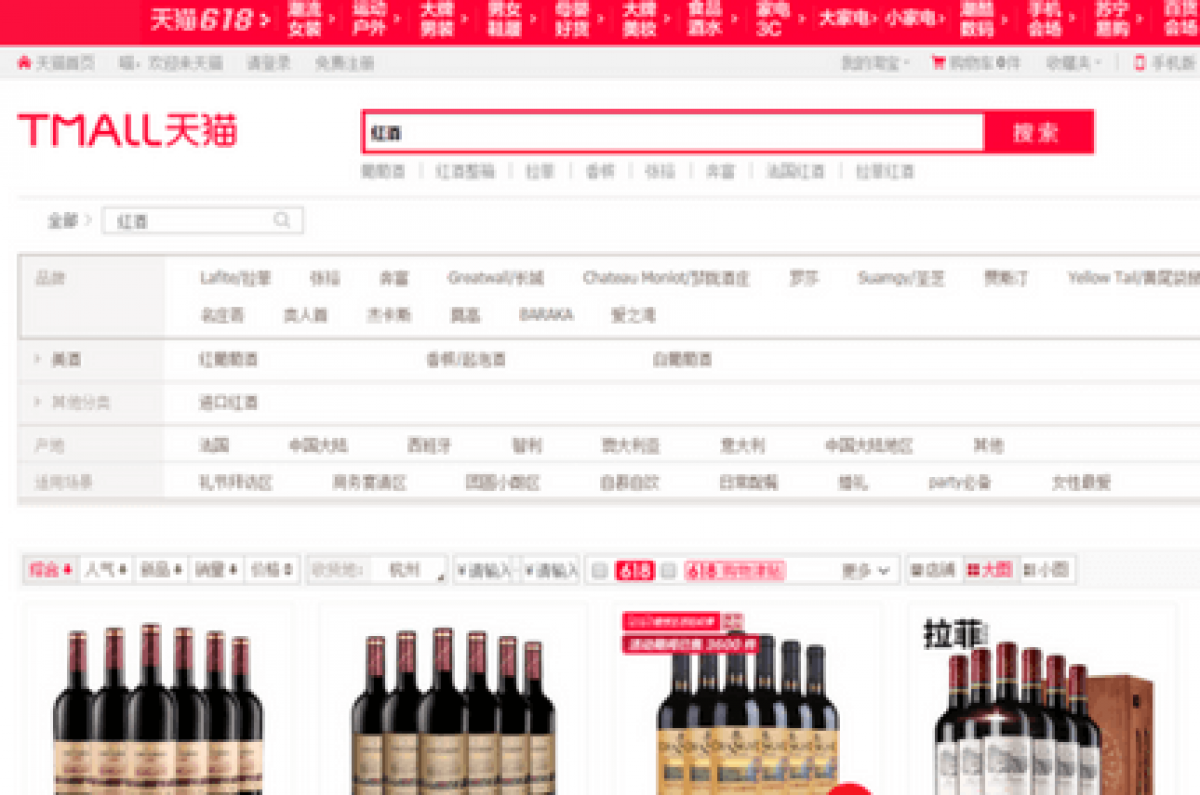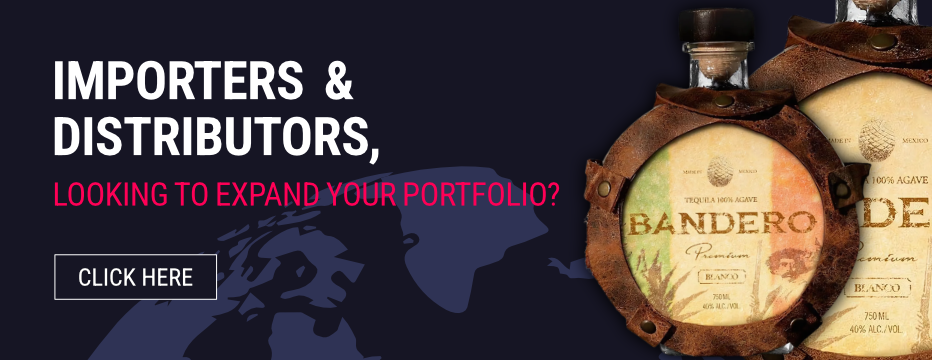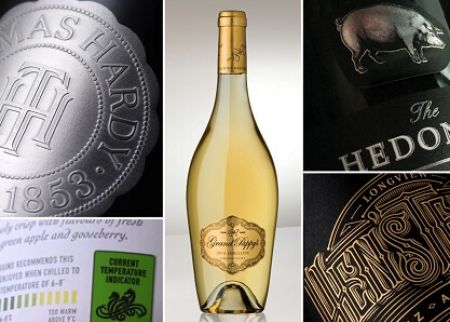Sommeliers Choice Awards 2024 Winners
The Chinese Tmall/WeChat Model: How to Tap New Wine Distribution Models in China
Looking to grow your distribution in the fast-growing Chinese wine market? Tmall, an e-commerce website, and WeChat, a social medium platform are just the tools you need

International winemakers looking to gain access to the fast-growing Chinese wine market are now creating sophisticated new distribution models comprised of two important pieces: an e-commerce piece and a social media piece. By connecting with Chinese wine drinkers on social media platforms such as WeChat, they can then boost efforts to sell wine direct-to-consumer on different e-commerce platforms such as Tmall.
The Tmall/WeChat Model
The e-commerce piece is Alibaba’s Tmall, a massive e-commerce platform that is similar in many ways to Amazon.com. And the social media piece is WeChat, a so-called “super app” that combines functionality found in apps such as WhatsApp, Twitter, Facebook Messenger and Skype. When combined together, these two pieces of the wine distribution model make it possible for Western wine brands to boost their sales in the Chinese market.
Some marketing experts have compared marketing on WeChat to the early days of marketing on Facebook – if you want to connect with consumers, you have to go where the consumers already are. And that’s especially the case since China is a very mobile-centric digital culture – you need to reach wine drinkers on their smartphone, otherwise, you simply won’t be able to reach them.
The good news is that both Tmall and WeChat continue to find innovative new ways to make it easier for Chinese consumers to learn about and purchase Western wines and spirits. For example, Tmall has worked with a handful of notable international wine brands – such as Lafite, Penfolds, Santa Rita and Mondavi – to create the “Tmall Wine Standard,” a sort of Michelin guide to wine for Chinese wine consumers. Alibaba has also famously promoted September 9 (9.9) as an International Wine & Spirits Festival Day. And Robert Mondavi has produced videos for Tmall, highlighting the legendary Napa Valley winemaker’s embrace of the Chinese wine market.
Wine Australia and Tmall
One of the most notable collaborations between international winemakers and Tmall involves Wine Australia, the industry trade group representing Australian winemakers. China currently accounts for more than one-quarter (26%) of Australia’s wine exports, so it makes sense for Australia to find new ways to tap this very important market.
In developing its partnership with Tmall, what Wine Australia found is that the Chinese market is different in many important ways from European or North American markets.
For one, there is no history of “wine culture” in China, so there has to be much greater education on the part of winemakers about wine and how to enjoy it. Secondly, a bottle of wine is still thought of as a gift that you give to others, so Chinese consumers tend to gravitate to the biggest, most prestigious and most expensive wine brands. And thirdly, Chinese consumers do not yet view wine as an everyday experience – they tend to view wine as something that is enjoyed during major holidays or festivals during the year.
So, taking all of those points into consideration, Wine Australia created a flagship wine store on the Tmall e-commerce platform dedicated exclusively to Australian wines. (LINK: AustralianWine.World.Tmall.com) The store is operated by Vinehoo.com, one of China’s leading online wine retailers.
Prior to creating this branded experience on Tmall, it was very difficult for Australian winemakers to stand out on the Tmall site – when you type in the word “wine” for example, options that pop up can range from a dry red wine from Chile to an upscale premium port wine from Portugal. Since Chinese consumers tend to favor big prestigious brands and bottles with hefty price tags, they might have ignored Australian wines in the past. Now, however, Chinese consumers have a way to view major Australian wine brands, all in the same place. You can even find affordable Yellow Tail wines, such as a Yellow Tail Shiraz, right there on the Wine Australia page.
And, to educate Chinese consumers about Australian wines, the Tmall page includes a summary of 6 different Australian wine regions (including Barossa Valley and Coonawarra), as well as a summary of different styles of wines that are geared to the tastes and expectations of Chinese wine drinkers. For example, red wines – the favorite of Chinese wine drinkers – are divided into “Heavy,” “Light” and “Fine & Delicate.” (To a Western wine drinker, some of these categories might appear to be somewhat arbitrary – a Merlot wine appears under the “Light” category while a Cabernet Sauvignon-Shiraz blend appears under the “Fine & Delicate” category)
The Tmall/WeChat Model and Premiumization
One notable trend in the Chinese market is premiumization and it is here, too, that both Tmall and WeChat are trying out new strategies to attract Western winemakers selling premium bottles of wine. Tmall, as already noted, has created a Michelin-style guide to wine. And WeChat has recently introduced a new “Brand Zone” where luxury Western brands can interact with Chinese consumers, even if they are not being followed on social media. Nearly a dozen premium luxury Western brands –including Cartier, Gucci and Louis Vuitton – have already signed on, and it’s easy to see how this could be used by premium wine & spirits brands to promote their products directly to Chinese consumers. Here, it is important to accentuate the refined, elegant and sophisticated elements of wine culture.
Near-term Trends to Watch
Right now, Tmall is the acknowledged giant of Chinese e-commerce sales. According to eMarketer, Tmall accounted for 56.6% of Chinese e-commerce sales in 2016. However, there are other e-commerce giants out there – such as JD.com – that could begin to carve out a more important role as wine e-commerce picks up the pace in China. So the Tmall/WeChat model might become the Tmall/JD/WeChat model.
And, of course, the push for the premiumization of the Chinese wine market continues to gain momentum. To help promote expensive bottles of wine, brands are reaching out to online influencers and celebrities, who typically like to hang out on social media. Using WeChat, wine brands partnering with influencers have a way to engage users (and potential customers) on Chinese social media.
Going forward, it’s easy to see how the Tmall/WeChat distribution model is going to make it easier than ever before for winemakers to enter the Chinese market. Instead of worrying about how to get their wines onto retail shelves, all they need to do is figure out how to get onto the smartphones of hundreds of millions of online users in China. If they have already experimented with Twitter, Facebook and Instagram in Western markets, then this process will be easier than might be originally anticipated.
Other Related Topics You might be Interested in:














